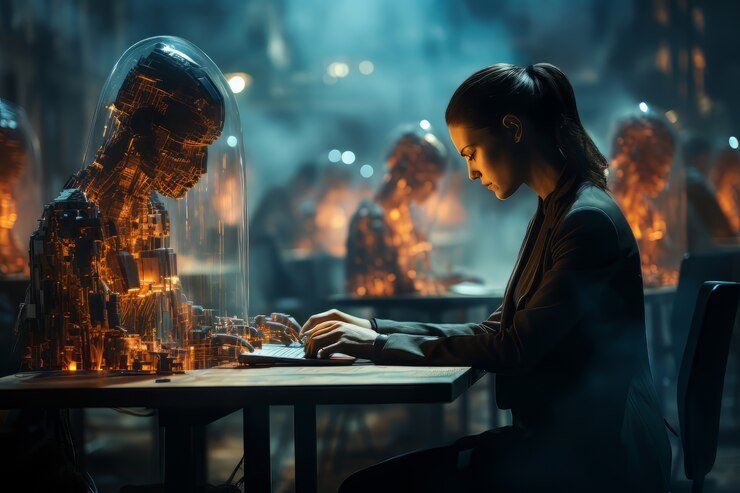
AndyWarhell
AndyWarhella is a digital artist blending the worlds of pop culture and cutting-edge technology. Inspired by the iconic Andy Warhol, this modern artist uses AI and digital tools to create captivating works that challenge traditional art forms. Mysterious and innovative, AndyWarhella’s identity and style have sparked intrigue in the art world, drawing attention from both critics and fans. As their influence grows globally, AndyWarhella is redefining what it means to be an artist in the digital age. Curious to know more about this rising icon? Let’s dive deeper into their artistic journey.
The Influence of Andy Warhol on AndyWarhella
Andy Warhol’s groundbreaking approach to art, particularly his ability to merge high and low culture, has left an indelible mark on many contemporary artists, including AndyWarhella. Warhol’s fascination with consumerism, celebrity culture, and mass production paved the way for new forms of artistic expression, which AndyWarhella has embraced and reinterpreted in a digital age.
AndyWarhella draws heavily on Warhol’s use of repetition and mass production, but instead of screen printing, they harness the power of digital tools to recreate and reinterpret familiar images. This modern twist adds another layer to Warhol’s legacy, taking his concepts and pushing them into a future that he only began to imagine. Just as Warhol revolutionized the way art was consumed by bringing everyday objects into the fine art world, AndyWarhella utilizes AI to blend art with technology, making it accessible and relatable to today’s audience.
Warhol’s influence also extends to how AndyWarhella plays with the concept of identity and persona. Much like Warhol, who crafted a public image that was almost as much a part of his art as his paintings, AndyWarhella remains enigmatic, allowing their digital creations to speak louder than their personal identity. This anonymity encourages focus on the art itself, creating a parallel between the way Warhol made himself both present and absent in his work.
Both artists share a fascination with popular culture. Warhol’s famous works with Campbell’s Soup Cans and Marilyn Monroe portraits made him a cultural icon. Similarly, AndyWarhella taps into current trends and figures, integrating modern technology and digital media into the work. This has allowed AndyWarhella to become a digital bridge between Warhol’s era and the current world, continually expanding on Warhol’s ideas through technology-driven creativity.
In this way, the influence of Andy Warhol on AndyWarhella is not only apparent but instrumental in shaping their distinctive style and approach to art. It highlights a continuous dialogue between past and present, with technology opening new avenues that Warhol’s early innovations laid the groundwork for.
Blending Pop Culture and Technology in Art
AndyWarhella’s work stands at the intersection of pop culture and cutting-edge technology. In a world increasingly defined by digital landscapes, they use modern tools to create art that speaks to contemporary societal influences, drawing from the rich history of popular culture and its relationship with technology.

In their approach, references to well-known icons, trends, and cultural moments are key elements. AndyWarhella mirrors the methods of artists like Warhol, who famously brought everyday consumer products and celebrities into the art space. However, while Warhol used traditional media such as paint and print, AndyWarhella works with advanced digital platforms and artificial intelligence. This allows the artist to recreate recognizable imagery in entirely new formats, engaging a digital audience in ways that weren’t possible before.
Technology plays a significant role in how this art is produced and distributed. AI, digital design software, and platforms like social media have become the tools of the trade. By embracing these, AndyWarhella can blend the familiar with the futuristic, breathing new life into subjects that people already connect with on an emotional level. The result is a dynamic conversation between the past and the present, where technological advancements give pop culture a fresh canvas to evolve.
This blending of influences allows AndyWarhella to create pieces that are both nostalgic and forward-thinking, appealing to fans of classic pop art while also introducing innovations unique to the digital age. The integration of these two elements has created a distinct space for AndyWarhella, where technology and culture work together to expand the boundaries of what art can represent today.
AndyWarhella’s Early Artistic Journey and Evolution
AndyWarhella’s artistic journey began with a fascination for blending traditional art with digital technology. In the early stages, they experimented with various digital platforms, exploring how technology could transform familiar artistic expressions. This period of growth was marked by a desire to push beyond conventional boundaries, integrating the influence of pop culture icons with the evolving tools of the digital world.
The early works of AndyWarhella reflect a curiosity for how digital mediums could replicate, remix, and elevate the classic styles of pop art. They drew inspiration from the works of well-established figures, not just in art but across various cultural sectors. With each new piece, AndyWarhella began to develop a signature style—one that was both a homage to past masters like Andy Warhol and a fresh exploration of what digital tools could bring to the table.
As the digital landscape advanced, so did their methods. Early on, AndyWarhella’s focus was primarily on creating digital versions of iconic imagery. However, this gradually evolved into more complex and interactive works. As they gained a deeper understanding of technology’s possibilities, their art began to include multimedia elements, allowing for a more immersive experience.
This evolution was not without its challenges. The early digital art community was relatively niche, and the tools were less advanced than they are today. Yet, AndyWarhella’s persistence in exploring new ways to incorporate emerging technologies into art paid off, enabling them to build a distinct presence. This period of growth laid the foundation for their future works, which continue to push the limits of art and technology.
The development from experimenting with basic digital tools to mastering AI-driven creativity marks a key turning point in AndyWarhella’s career. Over time, their work has matured into a complex blend of technology, art, and culture, setting them apart as a visionary in the digital art world.
Notable Works and Techniques
AndyWarhella’s creations are characterized by a unique blend of traditional pop art techniques and cutting-edge digital methods. Each piece stands out due to the innovative approach that mixes familiar cultural icons with modern technology, creating something that feels fresh and relevant to today’s digital world.
One key aspect of AndyWarhella’s technique is the use of artificial intelligence. This technology plays a significant role in how they produce their artwork. By feeding the AI various datasets, AndyWarhella can generate visually striking images that push the boundaries of conventional artistic methods. The AI processes the input and creates intricate layers, patterns, and designs that would be difficult to achieve through manual methods alone. This not only speeds up the creative process but also introduces a new level of complexity and depth.
Their works often focus on themes of repetition and variation, mirroring Warhol’s iconic style but with a digital twist. By repeating certain elements and subtly altering others, AndyWarhella creates pieces that evolve with each viewing. The dynamic nature of their art makes it well-suited for the digital age, where interactivity and user engagement are highly valued.
Another notable technique is the integration of motion and sound into visual pieces. Some of AndyWarhella’s works are designed to be experienced digitally, incorporating animated elements and soundscapes that add an immersive layer to the viewing experience. This multi-sensory approach sets them apart from traditional visual artists, highlighting the possibilities that technology brings to the creative process.
Beyond individual works, AndyWarhella has also explored larger-scale projects that merge art with the online world. Collaborations with other artists and tech developers have allowed them to create installations that live on social media platforms, turning art into an interactive experience. These works often invite audience participation, allowing users to influence or even alter the final piece through their interactions.
In essence, the notable works and techniques of AndyWarhella combine the boldness of pop art with the innovative capabilities of digital technology. By embracing AI, motion, and audience engagement, they continue to redefine the boundaries of contemporary art, offering something new with each creation.
Themes and Motifs in AndyWarhella’s Work
AndyWarhella’s art often centers around several recurring themes that reflect both modern-day digital culture and timeless concepts from pop art. One of the most prominent themes in their work is the exploration of identity in a technology-driven world. By incorporating AI and digital tools, AndyWarhella challenges the viewer to rethink the boundaries between human creativity and machine involvement. This exploration questions what it means to create and experience art in a world where algorithms are becoming increasingly intertwined with everyday life.

Another key motif in their art is the concept of repetition and mass production, much like the works of Andy Warhol. However, AndyWarhella takes this a step further by allowing the repetition to be driven by AI, introducing subtle variations that evolve over time. This reflects not only the legacy of consumerism that Warhol critiqued but also the ways in which digital culture amplifies and transforms the idea of mass production. The repetition in AndyWarhella’s work often highlights how digital tools can produce art in rapid succession while still retaining an element of uniqueness in each iteration.
Technology as a theme is ever-present, not just in the tools AndyWarhella uses but in the subject matter itself. They often feature symbols of the modern digital age, such as icons, software glitches, or avatars, which mirror the pervasive nature of technology in contemporary life. This focus on digital culture serves as a reflection of how people interact with and consume art today, where screens and algorithms mediate much of the artistic experience.
Pop culture references also play a major role in AndyWarhella’s work. Drawing on figures from entertainment, politics, and social media, their pieces tap into collective cultural memory. By integrating both nostalgic and current references, the work forms a connection between different eras of popular culture. This helps create a sense of familiarity while simultaneously pushing viewers to reflect on how these symbols have evolved with the times.
Finally, AndyWarhella often explores the relationship between art and commerce. Much like Warhol, they blur the line between art as a creative endeavor and art as a product to be consumed. This theme is particularly relevant in the context of digital art, where NFTs and other digital assets have become part of a new economy of artistic exchange. Through their work, AndyWarhella critiques and participates in this conversation, offering insights into how art functions within a commercialized digital landscape.
By weaving together these themes, AndyWarhella’s art presents a layered examination of modern culture, offering insights into how technology, identity, and consumerism intersect in today’s world.
The Role of NFTs and Digital Platforms in Success
NFTs (Non-Fungible Tokens) have become a central feature of AndyWarhella’s success. These digital assets allow artists to authenticate and sell their creations in a way that was previously impossible with traditional forms of art. For AndyWarhella, NFTs represent more than just a way to monetize digital work; they serve as a medium to explore new creative possibilities and distribution methods. By adopting this technology, AndyWarhella has been able to bridge the gap between art and digital commerce, redefining what it means to own and experience art in a virtual space.
Digital platforms also play a vital role in how AndyWarhella connects with a global audience. Social media, online galleries, and NFT marketplaces have given artists access to a far-reaching network of collectors and fans. These platforms make it easier for audiences to interact with, purchase, and even influence the art being produced. AndyWarhella’s use of platforms like Instagram, Twitter, and specialized NFT markets has allowed them to cultivate a community that actively participates in the conversation surrounding their work.
In addition to broadening reach, these platforms provide new avenues for artistic experimentation. With tools and apps designed for creators, AndyWarhella can continuously evolve their style and techniques, keeping up with the fast-paced changes of the digital world. The ability to instantly share new works and receive feedback from audiences has also fostered a more dynamic relationship between the artist and their viewers, something that was more difficult to achieve in traditional art settings.
NFTs and digital platforms have also shifted the power dynamics in the art world. By removing the reliance on physical galleries and auction houses, artists like AndyWarhella have more control over their work and how it is distributed. This autonomy has contributed to a greater sense of ownership, allowing them to experiment with pricing, editions, and the ways in which their work is consumed.
The success of AndyWarhella in the digital space highlights how the art world is changing. By embracing NFTs and digital platforms, they are not only reaching new heights in their career but also contributing to the ongoing transformation of art in the digital age. These innovations are reshaping how artists create, distribute, and monetize their work, opening up new opportunities that were once limited by the constraints of physical art forms.
Challenges, Criticisms, and Controversies
Like many artists working at the intersection of technology and creativity, AndyWarhella has faced a fair share of challenges and criticisms. One of the primary critiques surrounds the use of AI and digital tools in creating art. Detractors often argue that the involvement of machines in the creative process diminishes the role of human ingenuity and craftsmanship. This debate touches on the broader discussion of what defines “art” and whether something created through code can hold the same artistic value as something produced by hand.
Another challenge for AndyWarhella is the perception of digital art’s legitimacy in traditional art circles. Although the digital medium has gained significant traction, there are still segments of the art world that view it as less prestigious or serious compared to physical works such as painting or sculpture. This tension between digital and traditional art forms has sparked conversations about the future of artistic expression and whether digital creations will ever be seen on the same level as more classical forms of art.
The commercialization of digital art, particularly through NFTs, has also drawn criticism. Some accuse artists like AndyWarhella of prioritizing financial gain over artistic integrity. The NFT market, though transformative for many digital artists, has been labeled by some as speculative and exploitative, with concerns about inflated prices, environmental impact, and the fleeting nature of the market. These criticisms challenge artists to find a balance between innovation and authenticity in a rapidly changing art economy.
Beyond technical and market-related issues, AndyWarhella’s anonymous persona has also led to questions about identity and accountability. With a hidden identity, critics argue that it becomes difficult to assess the artist’s intent and background, leading to skepticism about the authenticity of their work. Some feel that this anonymity creates a barrier between the artist and the audience, reducing the sense of personal connection that many associate with more traditional forms of art.
Despite these criticisms, AndyWarhella continues to push the boundaries of what digital art can be. Challenges around authenticity, market dynamics, and the role of technology in creativity are ongoing discussions that don’t seem to deter the artist’s momentum. These controversies may even fuel further exploration into the role of AI and digital platforms in shaping the future of art, suggesting that such challenges are a part of the evolution process rather than roadblocks.
AndyWarhella’s Impact on the Art World and Emerging Artists
AndyWarhella’s presence in the art world has sparked new conversations about the role of technology in shaping modern artistic practices. By integrating AI and digital tools into their work, they have redefined what it means to create and consume art in an era where technology is becoming increasingly intertwined with everyday life. This shift has resonated with a new generation of artists who are exploring digital platforms as a primary medium of expression.

One of the most significant impacts has been the democratization of art production and distribution. With the rise of digital platforms, artists no longer need to rely on galleries or traditional art institutions to reach an audience. AndyWarhella, through the use of social media and NFT marketplaces, has demonstrated how artists can build a following and establish a presence without the constraints of physical exhibition spaces. This has opened up opportunities for emerging artists who may not have access to the conventional routes of success in the art world.
Additionally, AndyWarhella has shown how digital art can be both innovative and commercially viable. The use of NFTs has provided a new revenue stream for digital creators, challenging the notion that only physical artworks hold value. This success has inspired other artists to experiment with digital formats and consider the possibilities of monetizing their work in new ways. The influence extends beyond individual works, as it has prompted artists to rethink the economics of art in the digital age.
The artist’s use of AI has also been influential in encouraging experimentation with new creative tools. AndyWarhella’s work illustrates how technology can be a powerful ally in expanding artistic expression, allowing artists to create complex, data-driven pieces that go beyond traditional methods. For many emerging artists, the use of AI and digital design tools represents a new frontier, pushing them to explore the limits of what can be achieved with the aid of technology.
Perhaps one of the most important contributions is the challenge to the existing boundaries between art, commerce, and technology. AndyWarhella’s success exemplifies how these domains can intersect, offering a new model for artists who are navigating a rapidly changing cultural landscape. Their impact has inspired a wave of creators who are not only exploring new techniques but also questioning long-standing ideas about ownership, originality, and the role of the artist in a digital world.
By pushing these boundaries, AndyWarhella has helped shape a new understanding of art that embraces technological progress and encourages innovation. Emerging artists are now more willing to explore unconventional methods and engage with digital tools, knowing that these avenues hold potential for both creative fulfillment and commercial success.
Conclusion
AndyWarhella has made a profound mark on the art world by blending technology, pop culture, and artistic innovation. Through the use of AI, NFTs, and digital platforms, they have redefined the possibilities of art in the modern era, challenging traditional notions of creativity and distribution. Their work not only honors the legacy of pop art but also pushes it into new digital territories, inspiring emerging artists to explore the intersection of technology and art. As the boundaries between the physical and digital worlds continue to blur, AndyWarhella stands as a pioneering figure, reshaping the future of artistic expression.
FAQs
- Who is AndyWarhella?
AndyWarhella is a digital artist who uses AI and digital tools to create works influenced by pop culture, technology, and the legacy of Andy Warhol. - How does AndyWarhella incorporate AI into their artwork?
AndyWarhella uses artificial intelligence to generate patterns, designs, and variations, creating complex and dynamic pieces that would be difficult to achieve manually. - What role do NFTs play in AndyWarhella’s success?
NFTs allow AndyWarhella to authenticate and sell their digital art, opening new opportunities for ownership and monetization in the digital art world. - What are the main themes in AndyWarhella’s work?
AndyWarhella explores themes such as identity in a digital age, repetition and variation, pop culture, and the intersection of art and commerce. - How has AndyWarhella influenced emerging artists?
AndyWarhella’s use of digital platforms and AI has inspired a new generation of artists to explore innovative methods, digital formats, and new ways to distribute and monetize their art.




